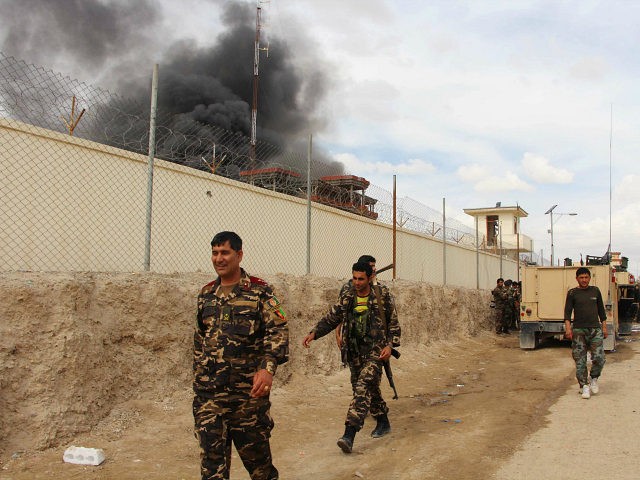One American service member was killed and another injured in southern Afghanistan’s Taliban stronghold of Helmand province a day after the U.S. military announced it was deploying nearly 100 troops to the same region in response to recent “tactical victories” by the jihadist group.
The identities of the two Americans had not been revealed as of Monday evening. Six members of the Afghan National Defense and Security Forces (ANDSF) were also wounded by the Taliban in Helmand province, located along the Pakistan border.
Voice of America (VOA) reports:
The Taliban has made “tactical victories” in Afghanistan, and its military campaign in a troubled southern province has prompted deployment of around 100 American troops to defend its capital at risk of falling to the Islamist insurgency, a spokesman for U.S. forces said Monday.
The Pentagon’s media arm, DoD News, adds:
An improvised explosive device [IED] killed a U.S. service member near Lashkar Gar in Afghanistan’s Helmand province today, wounding another U.S. service member and six Afghan soldiers, officials of NATO’s Resolute Support mission said.
In a statement announcing the incident, officials said the service member was killed conducting activities with Afghan counterparts under NATO authorities when their patrol triggered the IED.
News of the attack comes less than a month after the Special Inspector General for Afghanistan Reconstruction (SIGAR), a U.S. watchdog agency, reported that the American-backed Afghan government has lost control of more than one-third of its country, primarily to the Taliban.
Opium-rich Helmand, one of the deadliest regions for U.S.-backed troops throughout the nearly 15-year-old war, has historically been a Taliban stronghold.
The New York Times learned from Afghan government officials earlier this year that, as of mid-March, the Taliban controlled five (more than one-third) of Helmand’s 14 districts.
Despite announcing an end to the U.S. combat mission in Afghanistan at the end of 2014, President Barack Obama continues to escalate the war against both the Taliban and the Islamic State (ISIS/ISIL) branch (ISIL-K/IS-KP) of the Afghan-Pakistan region.
“The Taliban has had some tactical victories and that will likely continue as well… [But] they still have not been able to achieve their strategic desire and goal to seize a major population center here in Afghanistan,” Brig. Gen. Charles Cleveland told reporters in Kabul on Monday.
“The Taliban have the ability to commit violent acts… sometimes in the city or in the suburbs, and certainly we have seen that in some of the districts. But we don’t believe that Lashkar Gah is about to fall,” he added.
SIGAR revealed late last month that the Obama administration was increasing America’s military footprint in Afghanistan despite the president’s promise to wind down the war.
As of the end of May, there were 9,200 U.S. servicemembers in Afghanistan, according to the watchdog agency. Obama has vowed to bring that number down to 8,400 by the end of this year.
According to the Pentagon, at least 2,216 U.S. troops have been killed and another 20,048 wounded in Afghanistan since the conflict started in October 2001. The large majority (about 75 percent of deaths and 90 percent of injuries) have taken place under Obama’s watch. It is unclear whether the Pentagon’s tally includes the recent casualties.
SIGAR notes:
The ANDSF have struggled to respond to the Taliban’s growing national presence. There has been particularly stiff resistance in provinces along the border with Pakistan, such as Helmand, Kandahar, and Nangarhar, with reports that 68.5% of security incidents occur in southern, southeastern, and eastern Afghanistan. Many of the issues preventing the ANDSF from properly engaging the Taliban relate to deficiencies in key areas such as command and control, leadership, logistics, and overall coordination. High attrition rates, including high casualty rates, continue to make the sustainability of the ANDSF a major concern and priority for leadership.

COMMENTS
Please let us know if you're having issues with commenting.